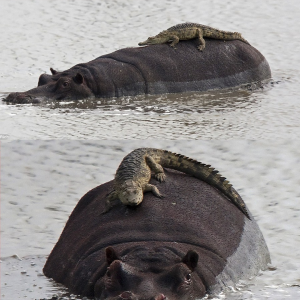It’s a bird. It’s a plane. It’s… a hippo? It might be, if a new study is accurate.
Researchers at the Royal Veterinary College (RVC) recently aimed to pinpoint exactly how hippos move. They say past research hasn’t been completely clear. Some studies have indicated that the multi-ton animals use a standard four-legged animal walk, while some suggested they trot. The team involved in the current study, published in PeerJ, were especially curious as to whether these largely amphibious giants can get airborne.

By using videos already available online, as well as collecting new footage of two hippos at Flamingo Land Resort in Yorkshire, the researchers were able to study 169 strides from 32 different hippos.
While they found that the animals pretty much always trotted or had trot-like movements, regardless of speed, they may just fly a little bit, too. The research showed that hippos could become airborne for up to 0.3 seconds, or about 15% of their stride cycle, when they were at top speeds. Their top speeds are nothing to sneeze at, either: They can run as fast as 19 miles per hour. Not so bad for an animal that can weigh nearly 10,000 pounds.
John Hutchinson, the study’s lead author and Professor of Evolutionary Biomechanics at RVC, says, “Our study was about as simple as biomechanics research can get. Anyone can take a camera or internet videos and learn something about how animals move from that footage. It’s hard to work with hippos as they tend to stick to the water, and very seldom are trained to be studied in zoo collections. They’re also very dangerous. That’s part of the reason why science knew little about how hippos move before our research.

“We’re thrilled to provide the first study purely focused on revealing how hippos walk and run. We were pleasantly surprised to see how hippos get airborne when they move quickly – it’s really impressive!”
The researchers say the hippos’ movement – trotting and some “flying” – is a bit of a departure from other large animals. Elephants can mostly just walk or “run” with at least one foot still on the ground, while rhinos have a similar array of gaits to smaller animals, even able to gallop at top speeds. The team says this shows hippos may be more athletic than elephants but not quite the sporty specimens that rhinos are.
The study helps shine light on hippos’ current movement and how their movement has evolved, while helping veterinarians recognize mobility issues in hippos.






